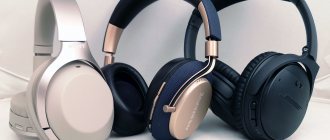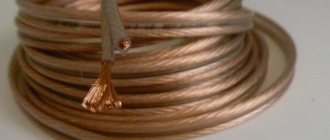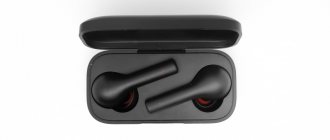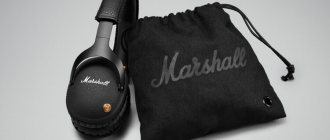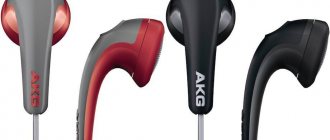This article will be devoted to a debriefing of a wide range of headphones and one of the main indicators - their impedance. 16, 32 or 320 Ohm - which resistance to choose and what does it affect ?
You can meet a person with headphones on the street everywhere. Some people are used to compact earbuds or in-ear . For some, stylish on-ear headphones have become the standard of good sound. There are also those for whom quality is the determining factor: on the heads of such music lovers you can see monitors . Despite such a variety of models, there are hardly any listeners familiar with such characteristics as: impedance, resistance, output power. And even if the words seem familiar, not many people will be able to connect all these terms together.
The mystery of numbers
Let's imagine that you have decided to purchase a new model of headphones. Let’s put the budget question aside, since the thickness of each buyer’s wallet is different. Let's immediately pay attention to the characteristics.
An attentive buyer probably paid attention to a number of incomprehensible physical characteristics marked on the beautiful box. Below is a photo with cutouts of three different models of headphones from famous brands:
What to look for when purchasing? So, we have three models with different characteristics:
Model A characteristics:
Frequency Response – Frequency range: 10 Hz – 20 kHz; Impedance – Resistance: 22 OHM; SPL – Volume level: 111 dB (+/- 3 dB);
Model B Specifications:
Frequency Response – Frequency range: 5 Hz – 40 kHz; Impedance - Resistance: 32 OHM; SPL – Volume level: 102 dB (+/- 3 dB);
Model C specifications:
Frequency Response – Frequency range: 5 Hz – 35 kHz; Impedance – Resistance: 250 OHM; SPL – Volume level: 96 dB (+/- 3 dB);
Frequency range. All three models have completely different numerical characteristics. Our task is to determine which headphones will feel more comfortable with a portable player or smartphone. Model B the widest range of reproduced frequencies : from 5 Hz to 40 kHz (even though the human ear perceives a range of only 16 to 20,000 Hz). Thus, the frequency range of all three models will suit anyone, even the most demanding listener. When choosing mid-price headphones, this parameter is not decisive, but is rather of a marketing nature.
Resistance . This is where we get to the most interesting part: all three models are radically different from each other. Let's figure out what the impedance and what is the optimal resistance value for use in conjunction with a smartphone?
All headphones are divided into two categories: low-impedance and high-impedance , and the gradation of this division directly depends on their type. Thus, full-size headphones with an impedance of up to 100 Ohms are considered low-impedance ; above 100 Ohm - high-resistance . In-ear headphones (“plugs” or earbuds) with a resistance value of up to 32 Ohms - low- ; above 32 ohm - high-resistance .
In the acoustic world of full-size speakers and loudspeakers, everything is simple: there is a 30-watt speaker with an impedance of 8 ohms. We connect the corresponding 8-ohm amplifier to the left and right channels and enjoy the loud sound. The situation with headphones is much more complicated and confusing. In the example above alone, we encountered three resistances:
- model A – 22 Ohm;
- model B – 32 Ohm;
- model C – 250 Ohm.
When asked: which headphones are best suited to a smartphone, the average buyer will confidently answer that the best model is the one with minimal resistance. “Low-impedance headphones, when paired with a smartphone, will sound louder, but high-impedance headphones require a separate powerful amplifier,” is a generally accepted statement from a sales assistant at an average electronics store. “Sit down, it’s still a bad grade,” my high school physics teacher would say, and here’s why.
The moment you increase the volume of music playback, the output signal changes not the power level, but the voltage . And only voltage directly affects power. To do this, from a school physics course, it is enough to remember two simple formulas of Ohm’s law:
Thus, to determine which headphones will play LOUDER, and which volumes will not be enough when using only a smartphone, you should pay attention not only to the resistance indicator of the headphones themselves, but also to the maximum voltage level that the minijack port of your smartphone or player. Almost all electronics manufacturers are in no hurry to introduce us to this indicator. As a rule, you can find out the exact voltage at the minijack output only from the device diagrams, which are not easy to find.
You should compare two different models in terms of volume not by power level, but by voltage consumption . The sensitivity of headphones with lower impedance is greater than that of a high-impedance model. But how does this affect the battery life of the smartphone?
frequency range
The frequency range of headphones is probably the simplest and most understandable value. The wider it is, the better the sound. If the factory settings go beyond the audible range, for example, 5 Hz - 25 kHz, it indicates that the edges of this very audible range will be reproduced without much loss. Maybe because this is a simple value, and even with large numbers, manufacturers tend to embellish it. There are often standard numbers such as 20 Hz - 20 kHz. And no indications about the conditions under which the measurements were made, not to mention the frequency response graph. 20Hz can really be there, but with such a volume that only instruments in a deaf acoustic room, where perhaps (just perhaps) the measurements took place, will hear them.
Sony MDR-1R headphones. Sensitivity - 105 dB, impedance - 48 Ohms, maximum input power - 1500 mW, frequency response - 4-80,000 Hz
Headphones and iPhone
Model A , with a resistance of 22 Ohms , will indeed sound louder, but at the same time it will consume more current . As a result, the 32-ohm model B will allow the smartphone to play music longer , by at least a quarter. Smartphones on the market have a maximum output voltage of no more than 150 - 200 mV , which is not enough to drive headphones with a resistance of more than 100 Ohms.
If the volume obtained on high-impedance headphones is quite satisfactory, a pleasant bonus awaits you - a significant reduction in battery power consumption .
Now let’s reveal the faces of the models discussed in this article. Here are the names of all three models:
The most “correct” headphone option for use in conjunction with an iPhone is the low-impedance model Bowers&Wilkins P7 . This is truly the loudest model reviewed with a standard audio frequency range.
The next model, Audio-Technica ATH-CKR10, has a good playback range and a considerable impedance of 32 Ohms. Considering that the headphones are in the in-ear category, they provide a good level of sound insulation, and the output voltage of the smartphone will be enough to achieve optimal volume.
Beyerdynamic DR 990 Pro headphone monitor model is a German standard in the field of professional mastering. The sound quality of these headphones will be the envy of any expensive competitor, but the high impedance level of 250 Ohms makes their use with the iPhone impossible. The DR 990 Pro and headphones in this category require a separate amplifier or audio player with a powerful sound card.
The EarPod headphones that come with the iPhone boast the following characteristics:
- Resistance : 23 OHMS Sensitivity : 109 DB Frequency range : from 5 Hz to 21 kHz.
The manufacturer himself gives a clear answer: using high-impedance headphones with an iPhone without additional accessories is impractical.
Power
But when it comes to power, you shouldn’t chase watts. Especially when the main source of music is a smartphone or portable player. With high sensitivity, a few milliwatts are enough for the music to play loudly, and the gadget’s amplifier is not overloaded and uses up battery power sparingly. Yes, if you choose headphones with high power, the sound will probably (just maybe) be solid and punchy. But this will not last as long as you would like - the gadget’s battery will begin to discharge rapidly under such a load. Moreover, there are often cases when the built-in amplifier simply cannot cope with powerful headphones. As a result, you won’t hear a good sound (loose, shallow bass), and you’ll get distortion at volumes above average.
For headphones used at home, high power is no longer a problem, because it is assumed that they will be used with a stationary amplifier. Then high power will contribute to high sound quality.
Beyerdynamic DT 1350 headphones. Sensitivity - 129 dB, impedance - 80 Ohms, maximum input power - 100 mW
Options for getting good portable sound
If the idea of getting high-quality sound from a smartphone still haunts you, get ready to spend your hard-earned money on purchasing an external portable amplifier.
High-impedance headphones actually sound better than their low-impedance counterparts, and for this reason. Due to the high level of resistance of the headphones, the amplifier delivers less current (at a higher voltage), and this prevents wave distortion in its stage. Moreover, headphones with high resistance have more uniform amplitude-frequency characteristics (a consequence of the increased number of turns on the magnetic levitation of the speaker), and provided there is low resistance on the amplifier side, the frequency response can remain practically unchanged.
Another alternative for obtaining high-quality sound is the use of so-called single-driver armature headphones .
Externally, they are no different from traditional earbuds, but have a raised mid- and high- frequency range, which provides “clean and transparent” sound.
Finally, purchasing a player with a high output voltage level can solve the problem of torment before choosing headphones once and for all.
Unlike smartphones and inexpensive players, Hidisz has a powerful preamplifier. The advantage is obvious: 2.2 V versus 100-150 mV for a smartphone. The use of such players opens up a wide range of high-impedance headphones with real high-quality sound to the music lover.
Before purchasing any headphones, especially high-impedance models, be sure to determine the maximum possible volume level when playing music on the device with which you plan further use. While focusing on the numerical characteristics of headphones, do not forget that hearing and any audio equipment are strictly individual things. Headphones with seemingly average values of impedance and frequency range can often give odds to the most technologically advanced examples.
PS We would like to thank Bowers & Wilkins for their help and professional advice in preparing the material.
( 123 votes, overall rating: 4.87 out of 5)


